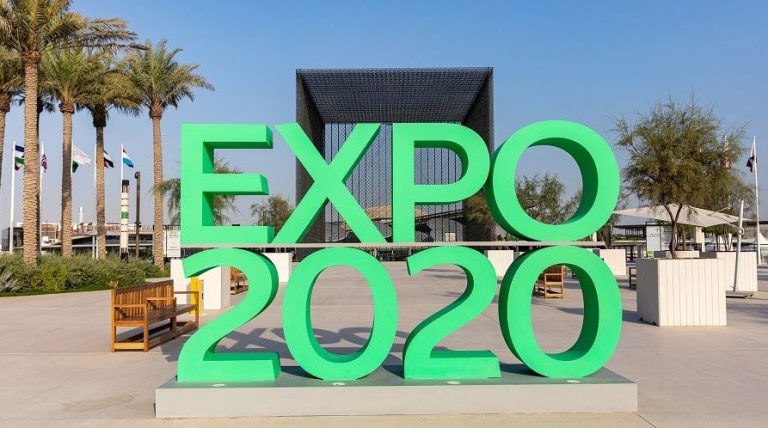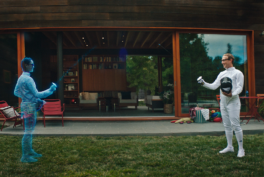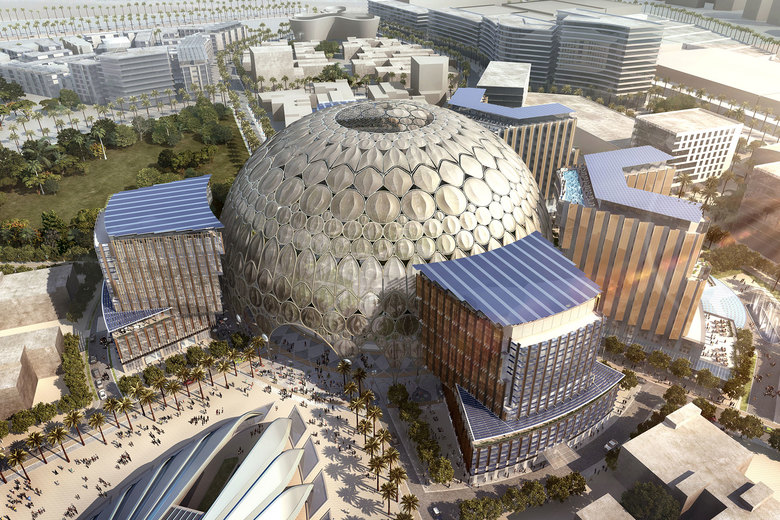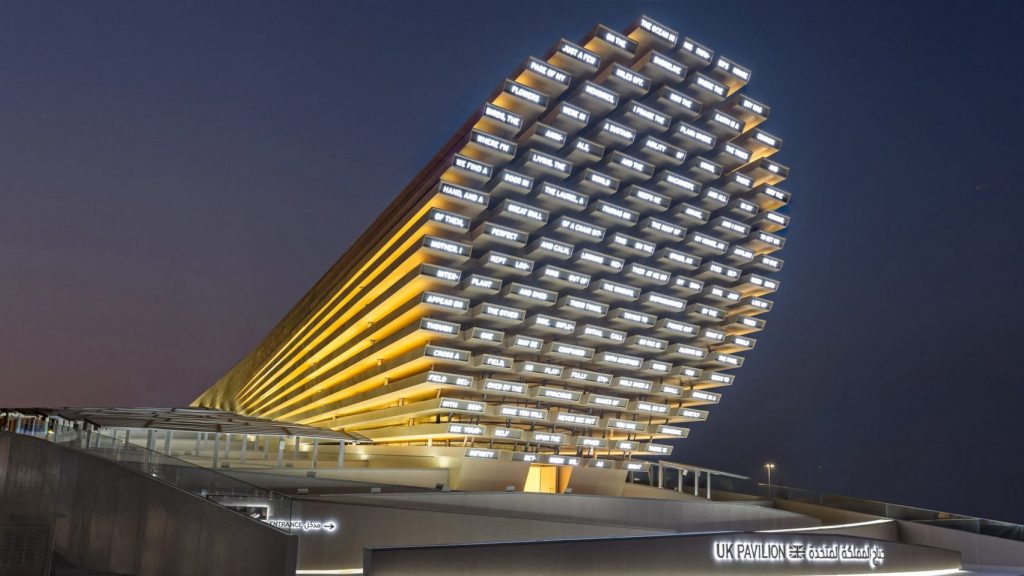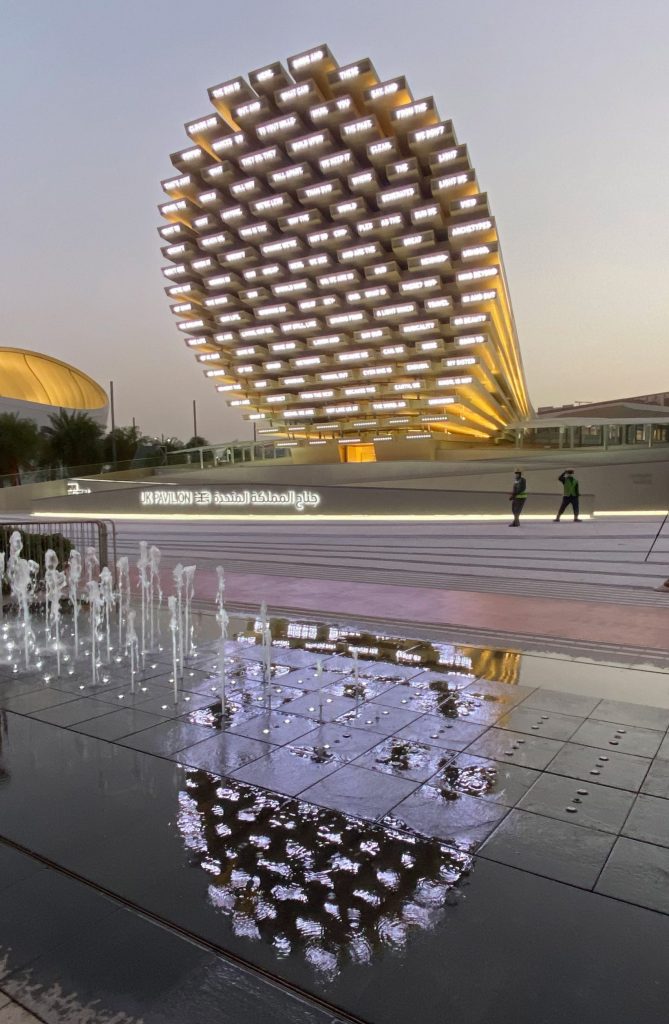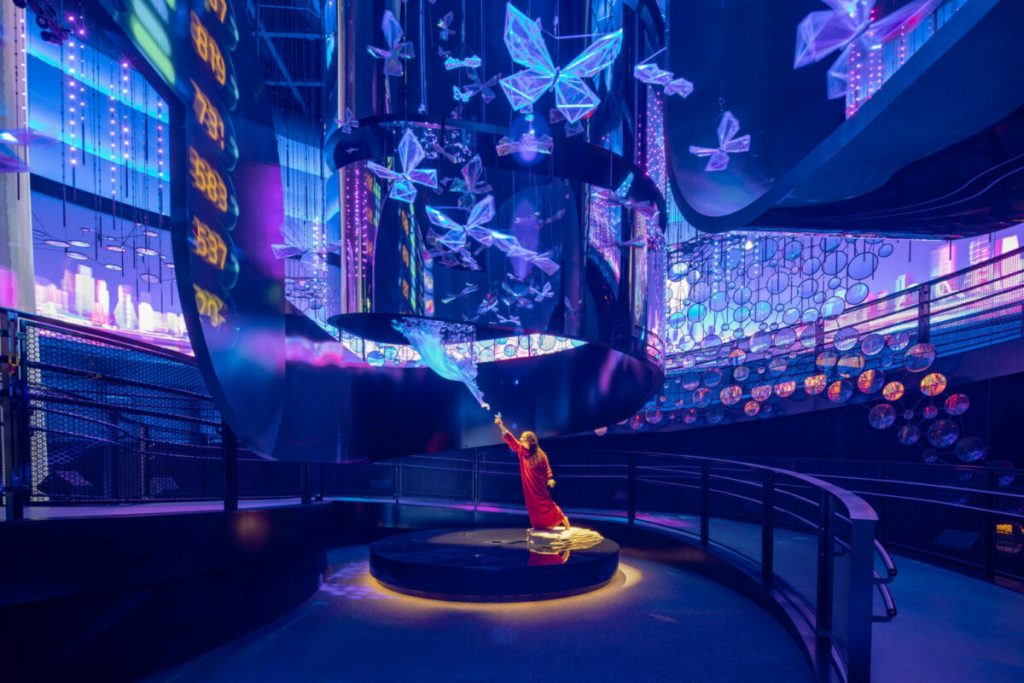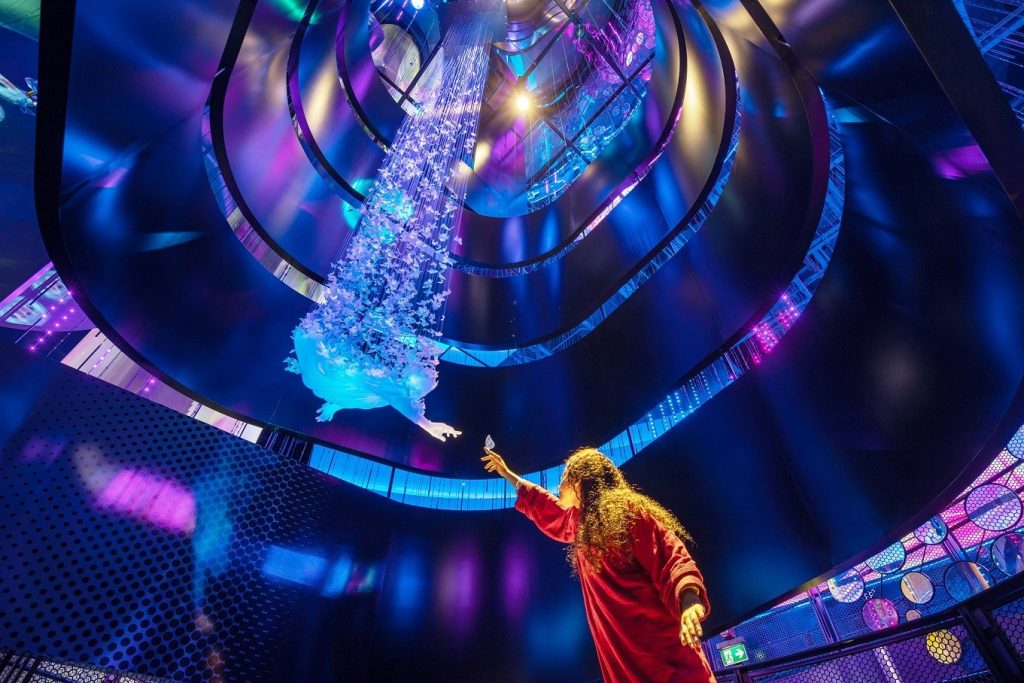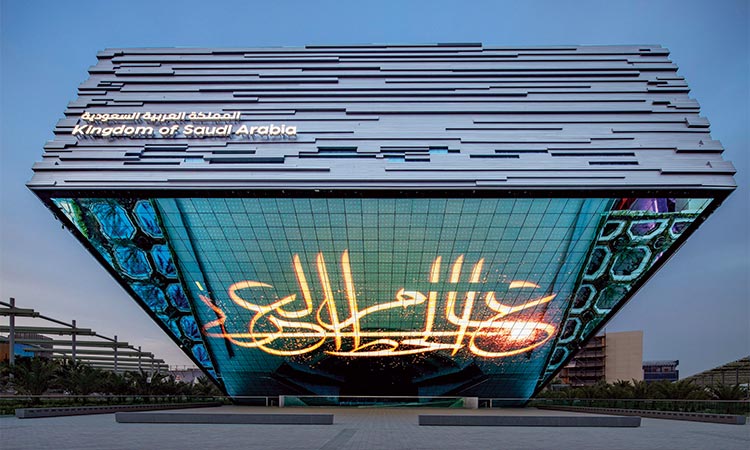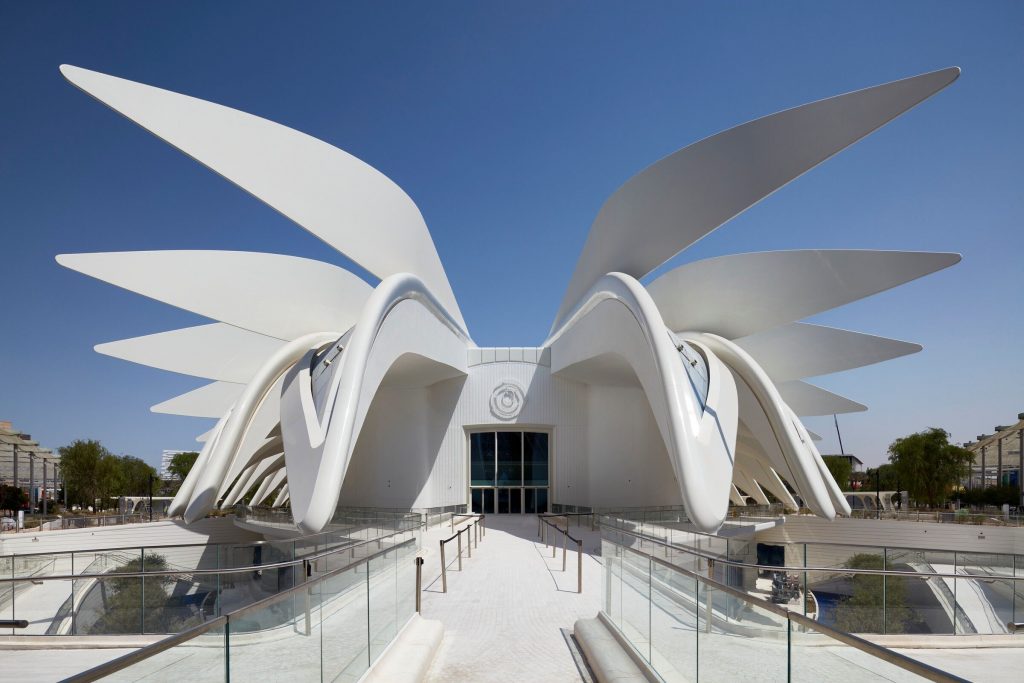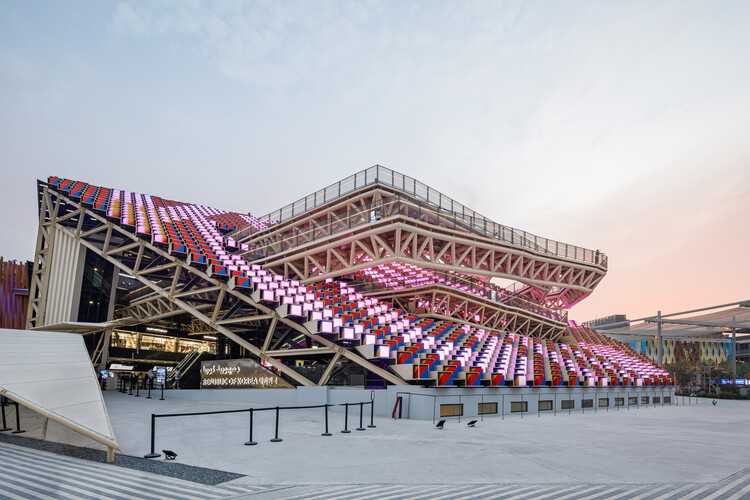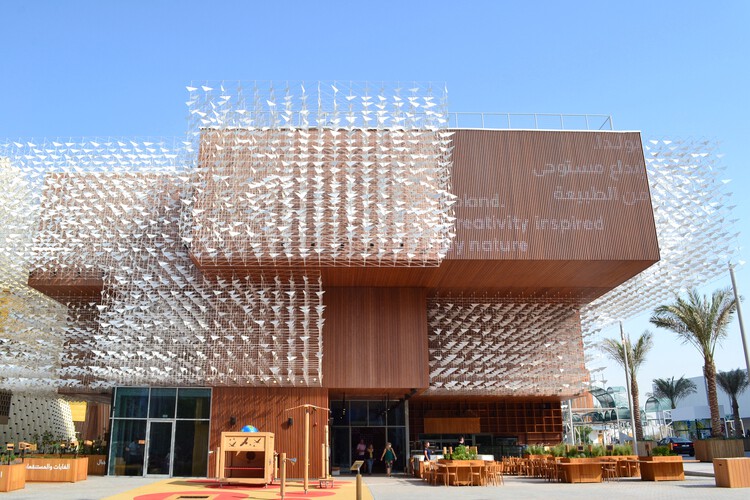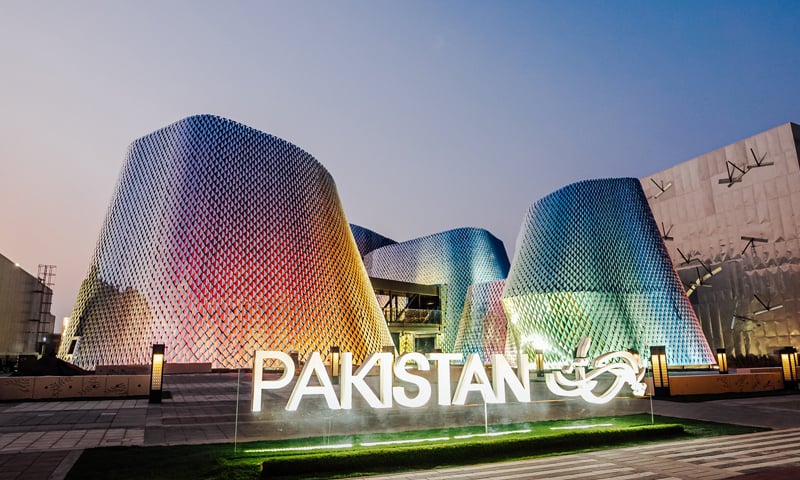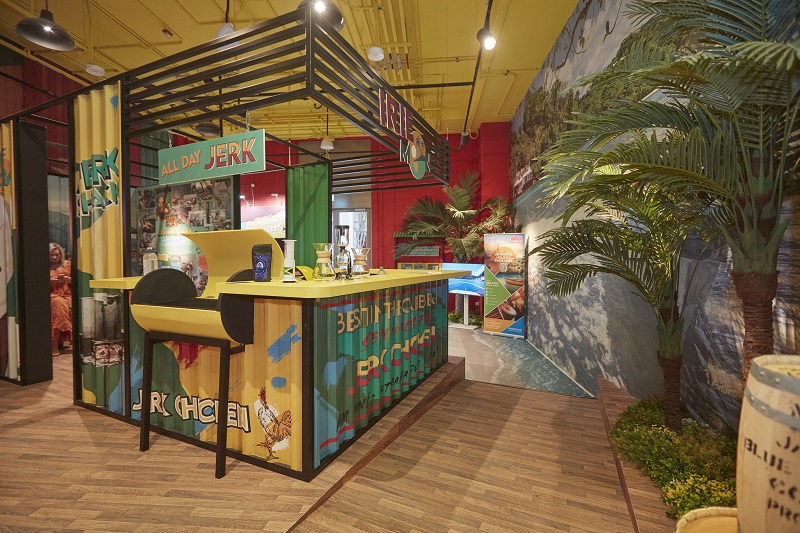ALIF Pavilion
ALIF – the Mobility Pavilion is a great experience to participate in. It was designed by the award-winning Foster + Partners group and features the world’s largest passenger elevator which can transport more than 160 people at a time. Its name comes from the first letter of the Arabic alphabet and symbolizes the beginning of progress and new horizons.
The exhibition tells a story of mobility starting with nine-meter-tall historical giants of mobility whose innovations helped navigate the world and paved the way for the technology we use today. It was designed and built by New Zealand’s Weta Workshop, a special effects firm that has won five Academy Awards and has worked on films such as Blade Runner 2049, Avatar, and The Lord of the Rings and The Hobbit trilogies.
Later on the passage takes us on a tour of the history of travel and shows us how mobility has driven the development of humankind. At the end we can step into the future with air taxis, AI, big data, and robotics that will evolve our cities and that will continue to change the way we think about mobility on a bigger scale.
